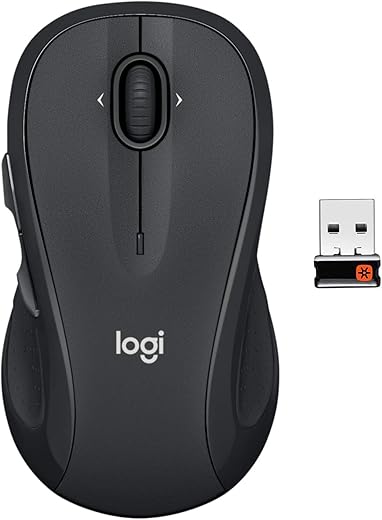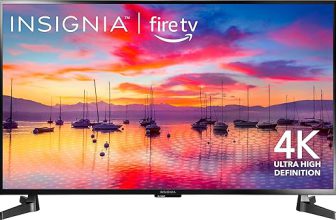
This guide outlines effective strategies for enhancing productivity by incorporating ergonomic computer accessories into your workspace. It emphasizes the importance of comfort during long hours at the computer, detailing how specific tools—such as adjustable chairs, keyboard and mouse designs, and monitor stands—can reduce physical strain and improve efficiency. By following these steps, users can create a healthier and more productive work environment, ultimately leading to better performance and well-being.


Assess Your Workspace
Evaluate your current workspace setup by measuring your desk height. Ensure that your elbows are at a 90-degree angle when typing; if your desk is too high or low, adjust it or consider using a keyboard tray. Assess your chair comfort by checking the lumbar support and seat height; your feet should rest flat on the ground, and your knees should be at hip level. Position your monitor at eye level, about an arm’s length away, to avoid straining your neck; if necessary, use a stand or stack of books to lift it. Identify any specific areas of discomfort, such as wrist pain or back strain, and take notes on the circumstances that lead to these issues during prolonged use.



Choose an Ergonomic Chair
Choose a high-quality ergonomic chair that provides adequate support for your lower back. Look for features that promote good posture, ensuring the chair is adjustable to suit your body type. Adjust the chair height so that your feet rest flat on the floor, with your knees maintaining a 90-degree angle. Test the chair’s lumbar support to confirm it fits comfortably against your lower back.
Adjust Your Monitor Height
Position your computer monitor at eye level to prevent neck strain. Use a monitor stand or stack books to elevate the monitor as needed. Ensure the top of the screen is at or slightly below eye level. Maintain a distance of about an arm’s length between your eyes and the screen for optimal viewing comfort.
Select an Ergonomic Keyboard
Choose a keyboard designed to minimize wrist strain. Look for features such as a split design, which separates the keys into two sections, allowing your hands to rest in a more natural position. Consider a keyboard with a built-in wrist rest that provides support and keeps your wrists aligned with your forearms while typing. Adjust the height of the keyboard so that your arms remain parallel to the floor, ensuring comfort and reducing the risk of injury.
Use an Ergonomic Mouse
- Choose an ergonomic mouse that fits snugly in your hand, ensuring it promotes a natural grip.
- Test different shapes and sizes to find one that feels comfortable during extended use.
- Opt for a vertical mouse or trackball design to minimize wrist strain and encourage proper hand positioning.
- Adjust the sensitivity settings of your mouse for easier movement across the screen.
- Place your mouse at the same level as your keyboard to maintain a neutral wrist position.
- Take regular breaks to stretch your hands and wrists, reducing fatigue and discomfort.
Incorporate Desk Accessories
- Incorporate a footrest to elevate your feet slightly, promoting better posture and reducing strain on your lower back. Look for adjustable options to customize the height based on your comfort level.
- Utilize a document holder to keep reference materials at eye level, minimizing neck strain. Choose a holder that can accommodate various document sizes and angles for optimal visibility.
- Implement cable management solutions, such as cable clips or sleeves, to organize and tidy up your workspace. This not only enhances the aesthetic but also prevents tangling and tripping hazards.
- Opt for a mouse pad with wrist support to maintain proper wrist alignment while using your computer, reducing the risk of repetitive strain injuries.
Take Regular Breaks
Take regular breaks throughout your workday to enhance your physical and mental well-being. Stand up, stretch your muscles, and move around for a few minutes to relieve tension and improve circulation. Implement the 20-20-20 rule: every 20 minutes, shift your gaze to something 20 feet away for at least 20 seconds. This simple action helps reduce eye strain and keeps your vision sharp while working at a computer.
Maintain Good Posture
Be mindful of your posture throughout the day. Keep your back straight by aligning your ears with your shoulders and your hips. Relax your shoulders by gently rolling them back and down, avoiding tension in your neck. Position your wrists in a neutral position by keeping them straight and not bent while typing or using your phone. Regularly check in with your body; pause every hour to assess your posture and adjust if you find yourself slouching or leaning forward.
Achieving Optimal Comfort and Efficiency
In conclusion, by thoughtfully integrating ergonomic computer accessories into my workspace, I can greatly boost both my productivity and comfort. Taking the time to assess my setup, selecting appropriate chairs and tools, and cultivating healthy work habits will contribute to a more efficient and enjoyable working experience. Adopting these practices not only benefits my immediate comfort but also supports my long-term well-being and effectiveness.
Essential Equipment List



Optimize Your Workspace
Essential Tips for Optimizing Your Computer Accessories
- Understand the Basics: Familiarize myself with common computer accessories such as keyboards, mice, monitors, and printers. Knowing what they are and their primary functions will help me utilize them effectively
- Connect the Accessories: Learn how to properly connect accessories to my computer, whether through USB ports, Bluetooth, or other connections. I should follow the manufacturer’s instructions for each device to ensure they work correctly
- Install Necessary Drivers: If required, I should install any necessary drivers or software that come with the accessories. This step is crucial for ensuring that my devices operate smoothly and are recognized by my computer
- Practice Ergonomics: Pay attention to the ergonomic setup of my workspace. I should position my keyboard and mouse at comfortable heights and distances to reduce strain and improve my overall computing experience
- Explore Settings and Customizations: Take some time to explore the settings on my computer to customize the functionality of my accessories. For instance, I can adjust mouse sensitivity or set up shortcut keys on my keyboard to enhance productivity
Essential Gear for Your Tech Needs
A good quality monitor is extremely important for graphic design work. High-quality monitors typically offer better color accuracy, which is essential for ensuring that the designs I create appear as intended across different devices. Monitors with higher resolution provide more detail, allowing me to see finer elements of my work clearly. Additionally, features like wider color gamuts and better contrast ratios enhance my ability to produce visually appealing designs. In short, investing in a quality monitor can significantly impact the precision and quality of my graphic design outcomes.
Different types of keyboards can significantly affect both typing speed and comfort due to their design, switch mechanism, and overall ergonomics.
- Switch Mechanism: Keyboards come with various switch types, such as mechanical, membrane, and scissor switches. Mechanical keyboards typically use individual switches for each key, which can provide tactile feedback and a distinct audible click, often leading to faster typing speeds for some users. In contrast, membrane keyboards tend to have a softer feel and may slow down typing speed due to their less responsive nature.
- Key Travel Distance: Keyboards also differ in key travel distance, which is the distance a key must be pressed down before registering. Shorter travel distances, as found in many laptop keyboards and low-profile keyboards, can allow for quicker keystrokes, while longer travel distances may provide a more comfortable typing experience for some users.
- Ergonomics: Ergonomically designed keyboards, such as split or tented keyboards, can help reduce strain on the wrists and fingers, leading to greater comfort during prolonged typing sessions. Increased comfort can improve typing speed, as users are less likely to take breaks due to discomfort.
- Layout and Design: The layout of the keyboard, including the position of keys and the overall design, can also influence typing efficiency. Keyboards with a layout that aligns better with natural finger movements can enhance speed and reduce errors.
In summary, the type of keyboard I choose can impact my typing speed and comfort significantly, depending on the switch mechanism, key travel distance, ergonomic design, and overall layout. Selecting the right keyboard is essential for optimizing my typing experience.
Ergonomic accessories are designed to fit the natural movements of the human body, which can significantly improve user comfort and reduce strain. By promoting proper posture, these accessories help to align the body in a way that minimizes stress on muscles and joints. For example, ergonomic chairs provide support for the lower back, reducing the risk of discomfort during long periods of sitting. Similarly, keyboard and mouse designs that encourage a neutral wrist position can prevent repetitive strain injuries.
Additionally, ergonomic accessories often encourage regular movement and variation in posture, which can alleviate fatigue and discomfort associated with static positions. Features like adjustable height desks allow users to alternate between sitting and standing, further contributing to overall comfort. Overall, integrating ergonomic accessories into the workspace can lead to enhanced productivity and a reduction in health issues related to poor ergonomics.
There are several benefits to using a mechanical keyboard over a membrane keyboard. First, mechanical keyboards typically offer a more tactile and responsive typing experience due to their individual mechanical switches for each key. This can lead to improved typing speed and accuracy.
Second, mechanical keyboards tend to have a longer lifespan. The switches can often withstand tens of millions of keystrokes, while membrane keyboards may wear out more quickly.
Additionally, mechanical keyboards often provide customization options, such as different switch types (e.g., linear, tactile, or clicky) that can cater to personal preferences for feedback and noise level.
They also usually allow for keycap customization and are often designed for easier maintenance, since individual keys can be replaced or cleaned more easily than a membrane keyboard.
Finally, many mechanical keyboards feature customizable RGB lighting and programmable keys, enhancing the user experience for gaming and productivity purposes.






Does anyone have advanced tips for using an ergonomic setup? I’ve got the basics down, but I want to take my productivity to the next level. Any hacks or specific adjustments that really made a difference for you?
Definitely! One advanced tip is to utilize software that reminds you to take breaks or stretches—something like Stretchly can be helpful. Also, experimenting with different screen brightness and contrast settings can reduce eye strain. Keep pushing the boundaries of your ergonomic setup!
I’ve been using the Logitech MX Vertical Mouse for a couple of months now, and I can’t believe the difference it’s made! My wrist feels so much better, and I can work longer without discomfort. Totally recommend it to anyone feeling soreness from regular mice. Also, don’t forget to check your grip style—it can affect how your hand feels while using different mice! Anyone else had a similar experience?
Could you include tips on how to manage cable clutter in an ergonomic setup? Sometimes I feel like my workspace looks like a tech jungle! I’ve tried some cable management clips, but they don’t work perfectly for all cables. Any suggestions?
That’s a fantastic idea! Cable management can definitely affect both aesthetics and functionality. Consider using a cable box to hide the mess or Velcro straps to keep cords organized. We’ll definitely think about covering this topic in a future article!
Thanks for sharing your experience! The Logitech MX Vertical is indeed a great choice for reducing wrist strain. It’s amazing how the right tools can make such a difference. If you’re open to it, could you share how you adjusted your workspace to fit this new mouse? It could help others looking to make a similar switch!
I found that using a standing desk really helped my productivity! But I do alternate between sitting and standing, which I think is important. I started with the Uplift V2, and it’s been game-changing for me. Anyone else tried something similar? What standing desk do you recommend?
Great to hear that the Uplift V2 is working well for you! Alternating positions is indeed key to maintaining energy levels. For those looking for alternatives, the Flexispot E7 is also a solid choice. Thanks for the tip!
I’ve been struggling with finding the right monitor height. I tried using books but it ended up being too wobbly. Any tips on getting a more stable setup? Would a monitor stand be a good investment?
Absolutely, a monitor stand is a great investment! It not only provides stability but also allows you to adjust the height easily. Look for one with adjustable features, like the VIVO Dual Monitor Desk Mount Stand. It’ll help keep your workspace tidy and ergonomic!
After following this guide, I switched to the Kinesis Advantage2 Keyboard, and wow! My typing speed has improved, and my fingers aren’t aching anymore. I didn’t realize how much of a difference the right keyboard could make! I highly recommend giving it a shot if you’re still on a standard one.
That’s awesome to hear! The Kinesis Advantage2 is a fantastic choice for comfort and efficiency. It’s great that you found a solution that works for you. If you have any specific tips on how you adjusted to the new keyboard layout, please share!